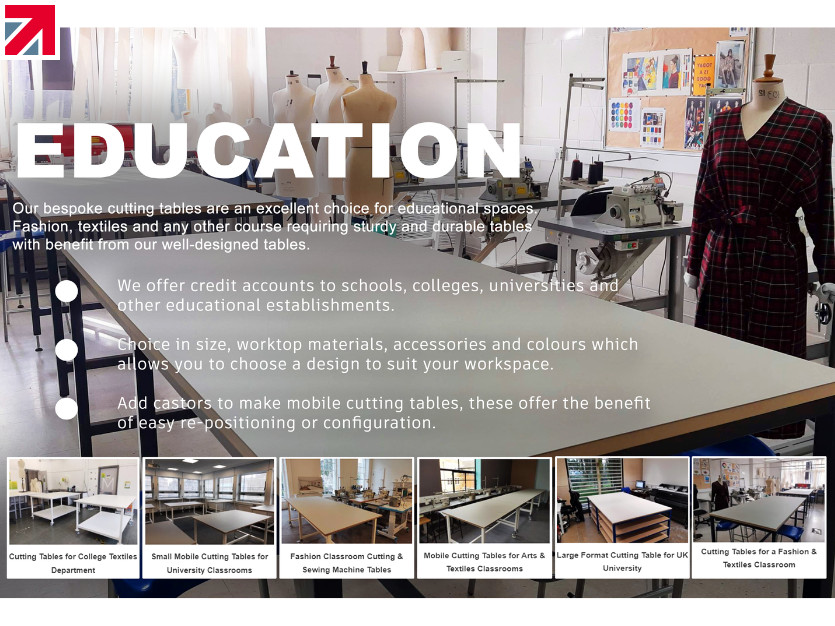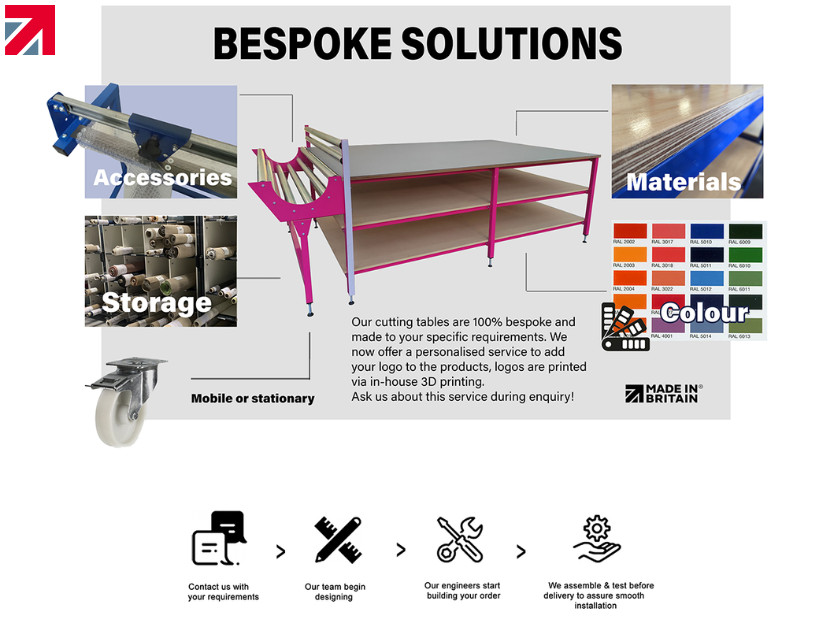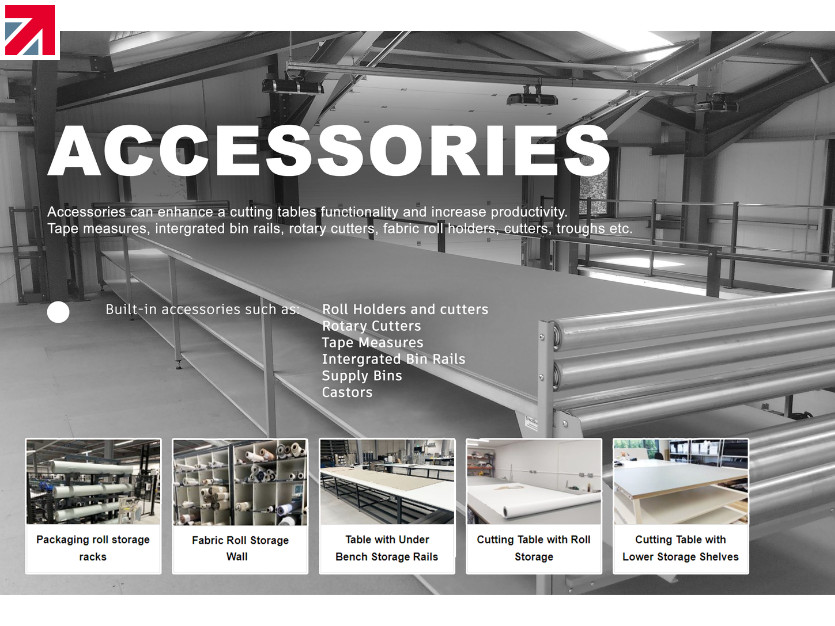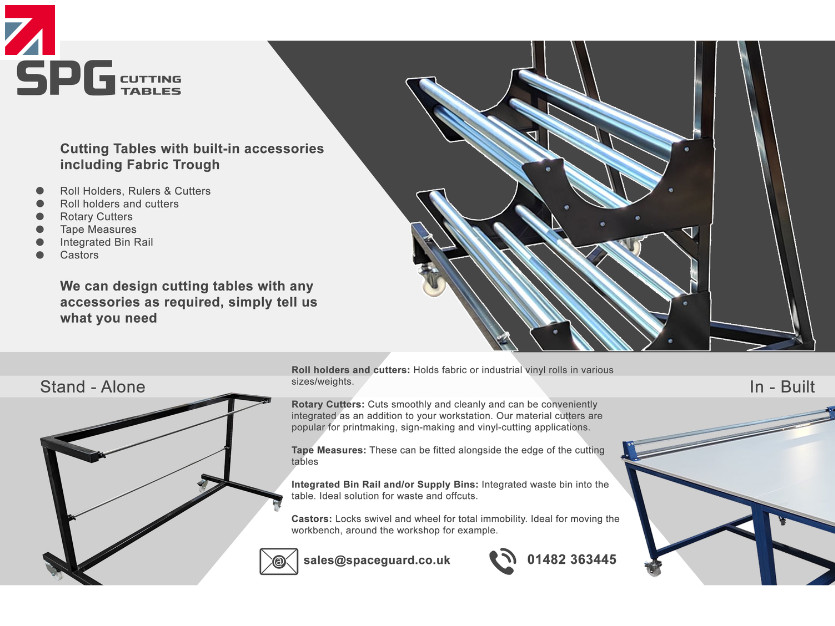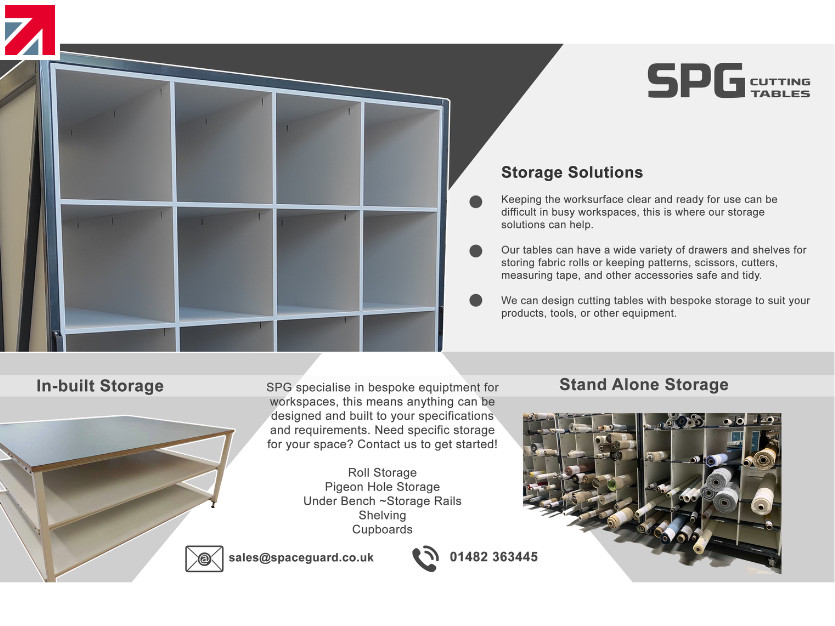Enhancing Educational Spaces with Cutting Tables
Cutting tables are a valuable addition to any educational environment, significantly boosting both student engagement and overall productivity. In fields such as fashion design, architecture, engineering, and product design, having dedicated, purpose-built workstations is essential. These tables offer a durable and practical surface for tasks like pattern cutting, model building, and other hands-on projects. By incorporating high-quality cutting tables into classrooms and studios, institutions can create a safer, more efficient learning environment that supports creativity, precision, and skill development.
How to Choose the Right Cutting Tables for Educational Facilities
Selecting the ideal cutting tables for your educational setting involves more than just picking a surface—it’s about finding a solution that supports both teaching and hands-on learning. Here are a few key factors to keep in mind:
- Space and Sizing – Measure your classrooms or workshops carefully to ensure the tables fit comfortably without making the space feel cramped. If you're going custom, having clear dimensions ready will make the process smoother.
- Ease of Use – Look for cutting tables that are versatile, adjustable, and intuitive. They should accommodate a range of activities across different subjects, from design and textiles to engineering and architecture.
- Durability and Value – While budget is always a consideration, opting for sturdy, high-quality tables can save money in the long run by minimizing repairs and replacements—plus, they create a better experience for students.
Key Features of an Educational Cutting Table
When equipping classrooms and workshops with cutting tables, it's important to choose models that are functional, safe, and built to last. Here are five essential features to consider:
Sturdy Construction and Long-Term Stability
Cutting tables used in educational settings need to handle daily wear and tear. Tables with strong steel frames and reinforced surfaces ensure durability, while a stable, wobble-free design supports precise, safe cutting—benefiting both students and instructors.
Ergonomics for Comfort and Efficiency
Since students and staff often spend hours at these workstations, ergonomic features are a must. Adjustable height options—especially motorized ones—allow users to work comfortably, regardless of height or task. Adding anti-fatigue mats can also reduce strain during long sessions.
Surface Materials that Match the Task
The tabletop material plays a major role in usability and durability.
- Self-healing mats are great for textile and paper work, offering a surface that resists wear from repeated cutting.
- Wooden or laminated tops work well for sketching, drafting, and general projects.
- Metal surfaces are ideal for heavier-duty tasks in engineering or industrial design, especially when heat resistance is needed.
Integrated Storage for Better Organization
Built-in drawers, shelves, or tool racks help keep essential items like rotary cutters, rulers, and measuring tapes organized and within reach. This is especially helpful in busy classrooms where staying tidy improves workflow and focus.
Prioritizing Safety in the Classroom
Safety is non-negotiable in educational environments. Look for features such as non-slip surfaces, rounded corners, and blade guards to reduce the risk of injury. Some cutting tables even include integrated lighting for better visibility during detailed work.
Cutting Table Applications Across Educational Disciplines
Cutting tables play a vital role in hands-on learning across a wide range of academic programs. The right table setup can support both creativity and technical precision in various fields:
Fashion and Textile Design
In fashion courses, accuracy is everything—especially when cutting fabric patterns. Tables with large, flat surfaces and self-healing mats provide an ideal workspace for laying out fabric and making clean, consistent cuts with shears or rotary tools. Some schools even utilize computerized cutting systems for automated, high-precision pattern cutting.
Architecture and Model-Making
Architecture students often build scale models using materials like foam board, acrylic, and balsa wood. A sturdy, stable cutting table gives them the control they need for precise cuts. Extras like grid lines or built-in measuring tools can help streamline the model-making process and improve accuracy.
Engineering and Industrial Design
For more heavy-duty tasks, such as cutting plastics or light metal sheets, engineering students need robust worktables. Heat-resistant surfaces, integrated clamps, and reinforced frames allow them to safely manage complex builds and prototypes with confidence.
Fine Arts and Graphic Design
Art and design students use cutting tables for everything from printmaking to paper cutting and collage work. Spacious surfaces make it easier to handle large paper formats or intricate mixed media projects, providing a stable foundation for delicate, detailed work.
Cutting tables are essential tools in university environments, supporting hands-on learning and creative exploration across multiple disciplines. By investing in durable, ergonomic, and functional cutting tables, educational institutions can enhance student productivity, safety, and overall learning experiences. As universities continue to evolve, integrating high-quality cutting workstations will remain a critical factor in academic success.
Looking to upgrade your university's workshop or classroom with cutting tables? Explore our range of customizable options designed to meet the needs of modern educational environments.
01482 363445
Explore our websites for tailored solutions:
🌐 SpaceGuard.co.uk – Workplace Equipment
🌐 PackingTables.co.uk – Packing tables and Workbenches
🌐 ConveyorSystems.co.uk – Conveyor Solutions
🌐 CuttingTable.co.uk – Specialist Cutting Tables
Find out more about Spaceguard Ltd on their member profile page here
Member-created content 2 weeks ago | From members
